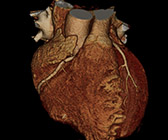Vertebroplasty
The spine is made up of many vertebral bodies that withstand a considerable amount of force over the course of one’s life. Over time, the bone may be weakened from
osteoporosis or, rarely, cancers. If the force of injury is sufficient, one or multiple vertebral bodies may flatten or “compress” in response to these causing a compression fracture. These fractures are typically very painful and may require high doses of pain medication and an extended period of convalescence. They can also lead to loss of height over time.
What is Vertebroplasty?
Vertebroplasy is a minimally-invasive, outpatient based procedure involving the placement of medical grade cement into a fractured vertebral body.
Am I a candidate?
Patients will be seen by an interventional radiologist to determine if a patient is a suitable candidate for vertebroplasty. A detailed history will be necessary and imaging studies reviewed. Typically, patients will need an MRI of the affected area of the spine prior to the procedure. If the patient has a pacemaker or is unable to have an MRI for another reason, a CT and/or bone scan will be requested. Basic laboratory tests will be necessary prior to vertebroplasty.
How should I prepare?
The patient will need to abstain from food for at least six hours before the procedure. He or she will receive an intravenous catheter for administration of conscious sedation. The patient is placed in a prone position on a special angiographic table that contains an advanced x-ray machine that can image the spine. Once the level or levels of fractures are identified, the back is cleaned with antiseptic solution. A nurse will continually monitor the patient’s hemodynamic status and administer pain medication and sedatives as needed. The back is numbed with a local anesthetic called lidocaine and a trocar or hollow needle is advanced into the vertebral body utilizing x-ray guidance. One level may require the placement of two needles. Once the tip of the needle is in the appropriate location, a small amount of medical grade cement called polymethylmethacrylate is injected. This cement will fill the cracks of the fracture, treating the painful nerve endings in the vertebral body and strengthening the bone. Up to two fractures may be treated during a treatment session.
What should I expect?
Vertebroplasty typically takes approximately one hour per level of treatment. After the procedure the patient is observed in a short stay unit for several hours and then is typically discharge home. Many patients will see a dramatic and relatively instantaneous improvement in symptoms. Other patients will have a more gradual improvement. Most patients will have some soreness at the site in which the needles were placed which can be treated with mild pain medications and/or ice packs applied to the back. Because the patient will receive conscious sedation, he or she will need a ride home from the hospital.
Is Vertebroplasty safe?
Vertebroplasty is a very safe procedure. But like any procedure there are risks involved. There is a small risk of bleeding, infection, increased back pain, or the development of a new fracture. While the administration of the cement is carefully watched with x-ray, a small amount of cement could leak out of the vertebral body. This typically does not cause any serious problems, unless the leaking cement enters into the spinal canal which is rare.
Patients will be seen in consultation at the Brinton Lake office. The procedure can be performed at Crozer-Chester Medical Center or Riddle Memorial Hospital. Vertebroplasty is typically covered by most insurance carriers.
Please call 610-579-3515 to schedule a consultation with one of our interventional radiologists.
Content provided with permission by the Society of Interventional Radiology.



